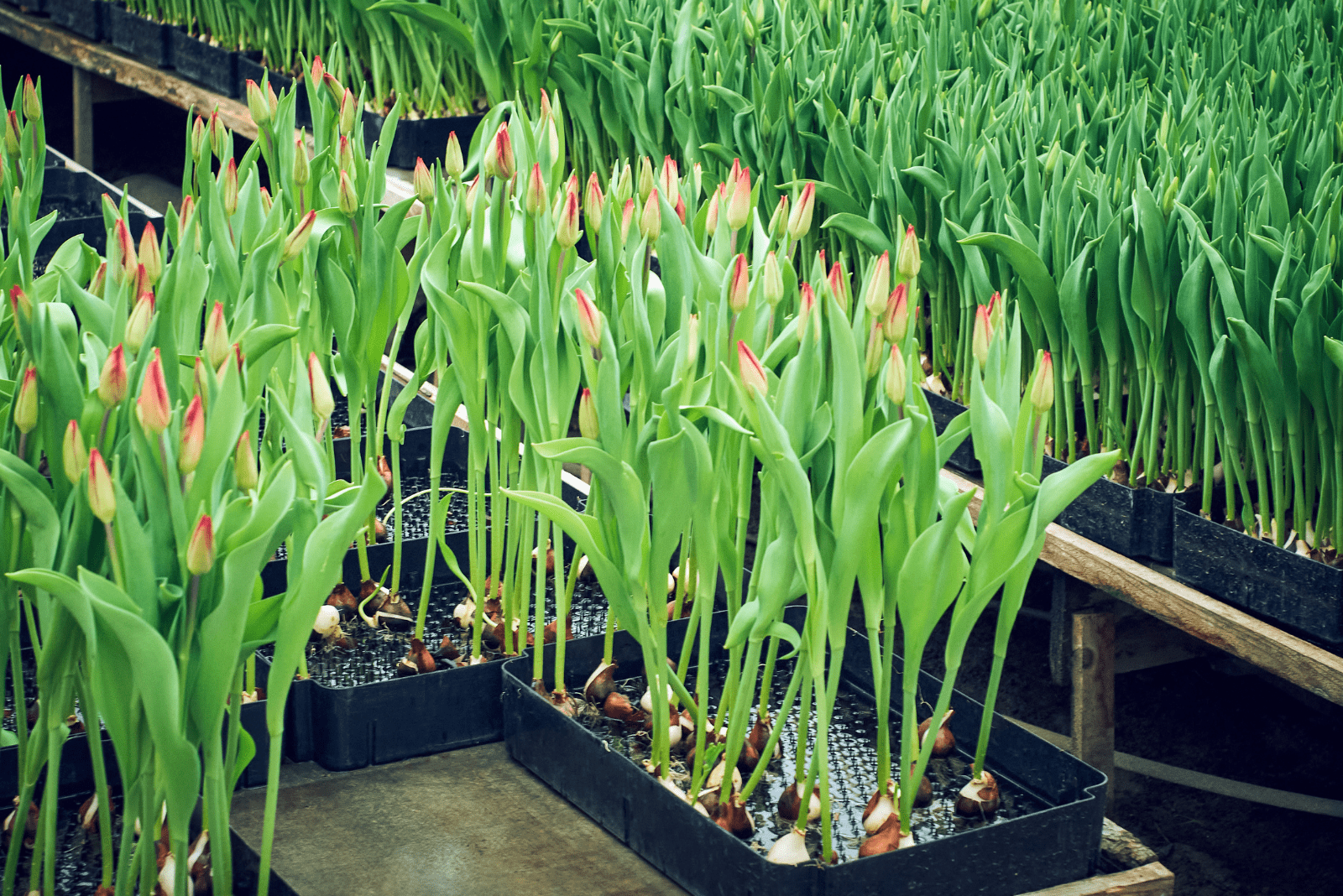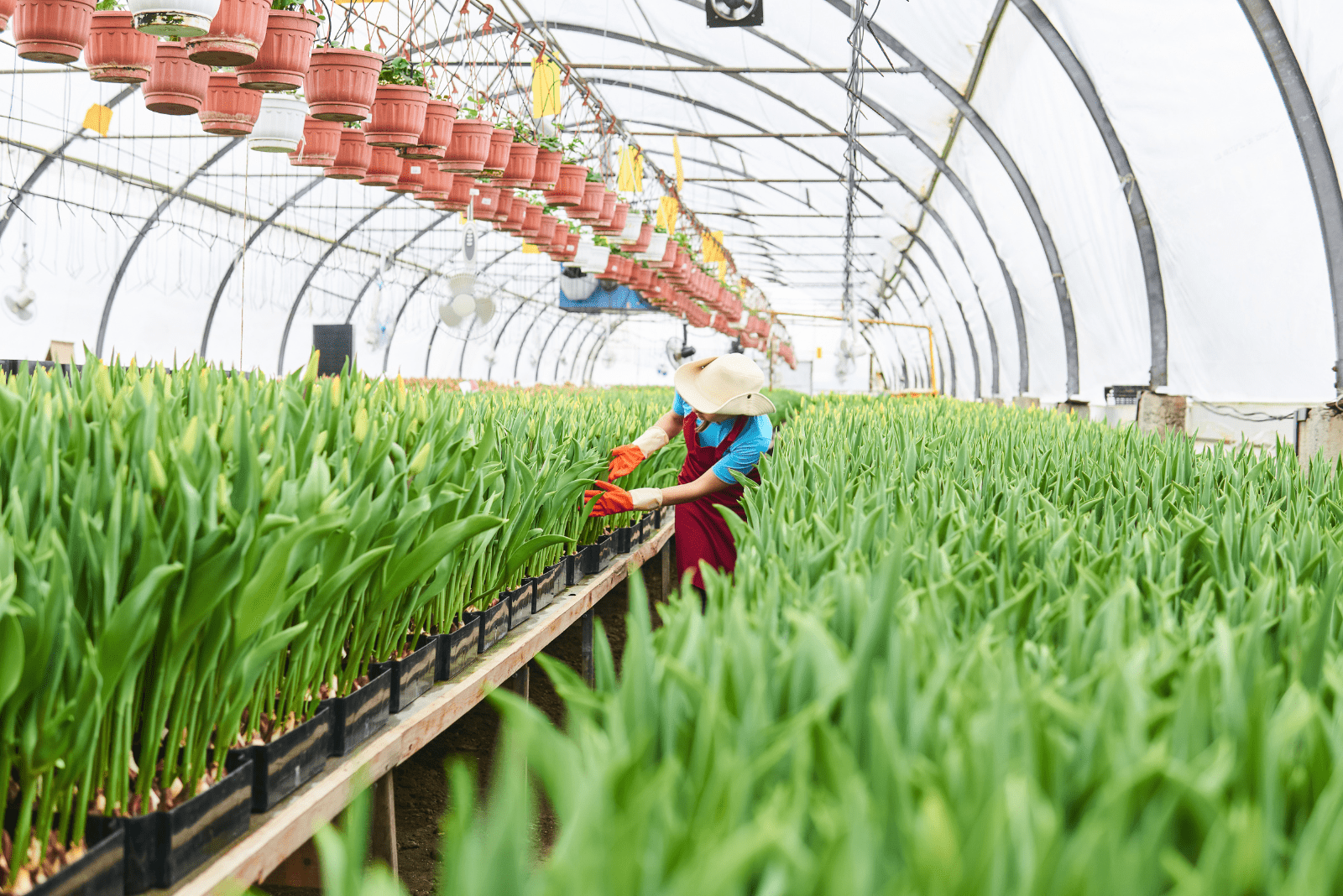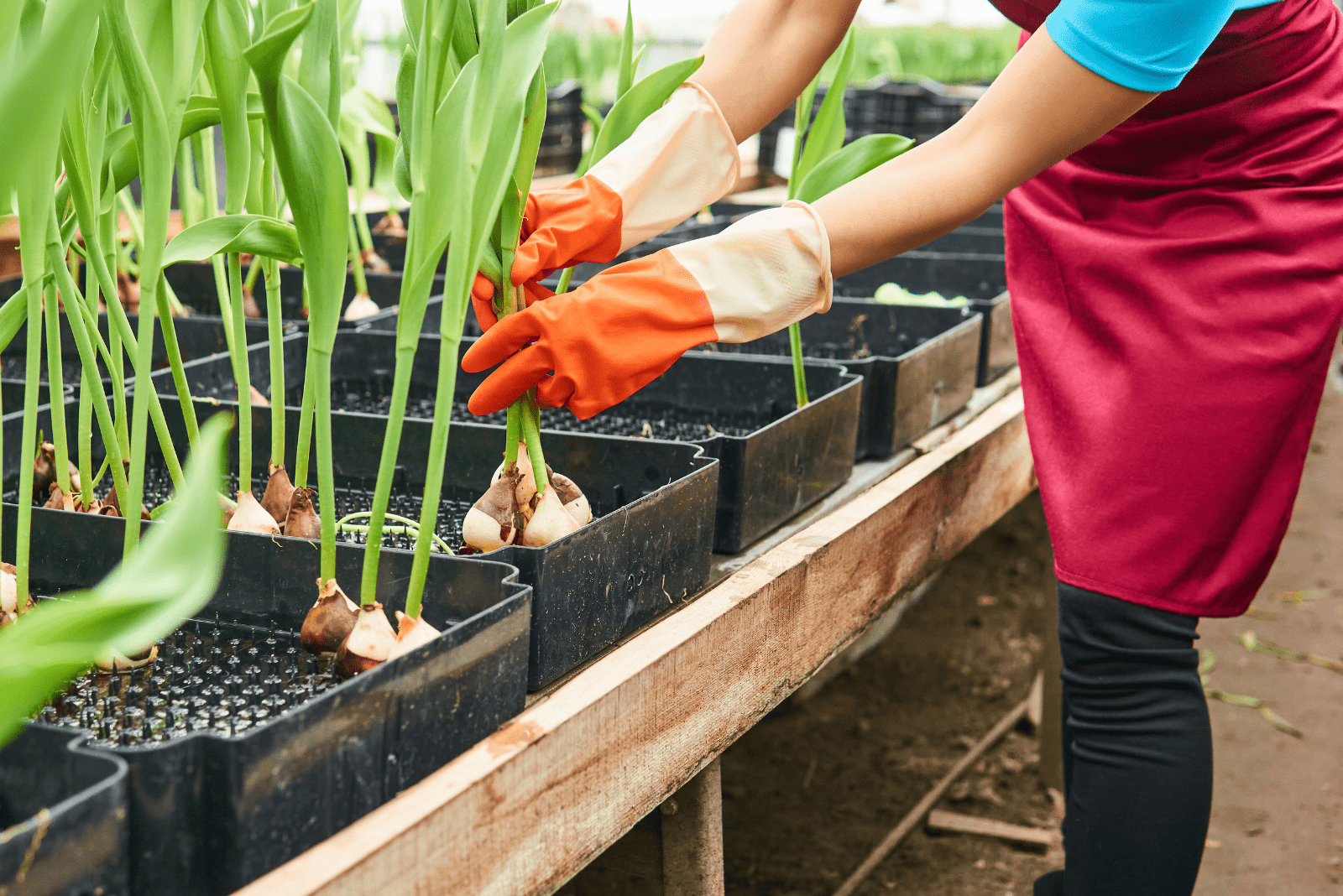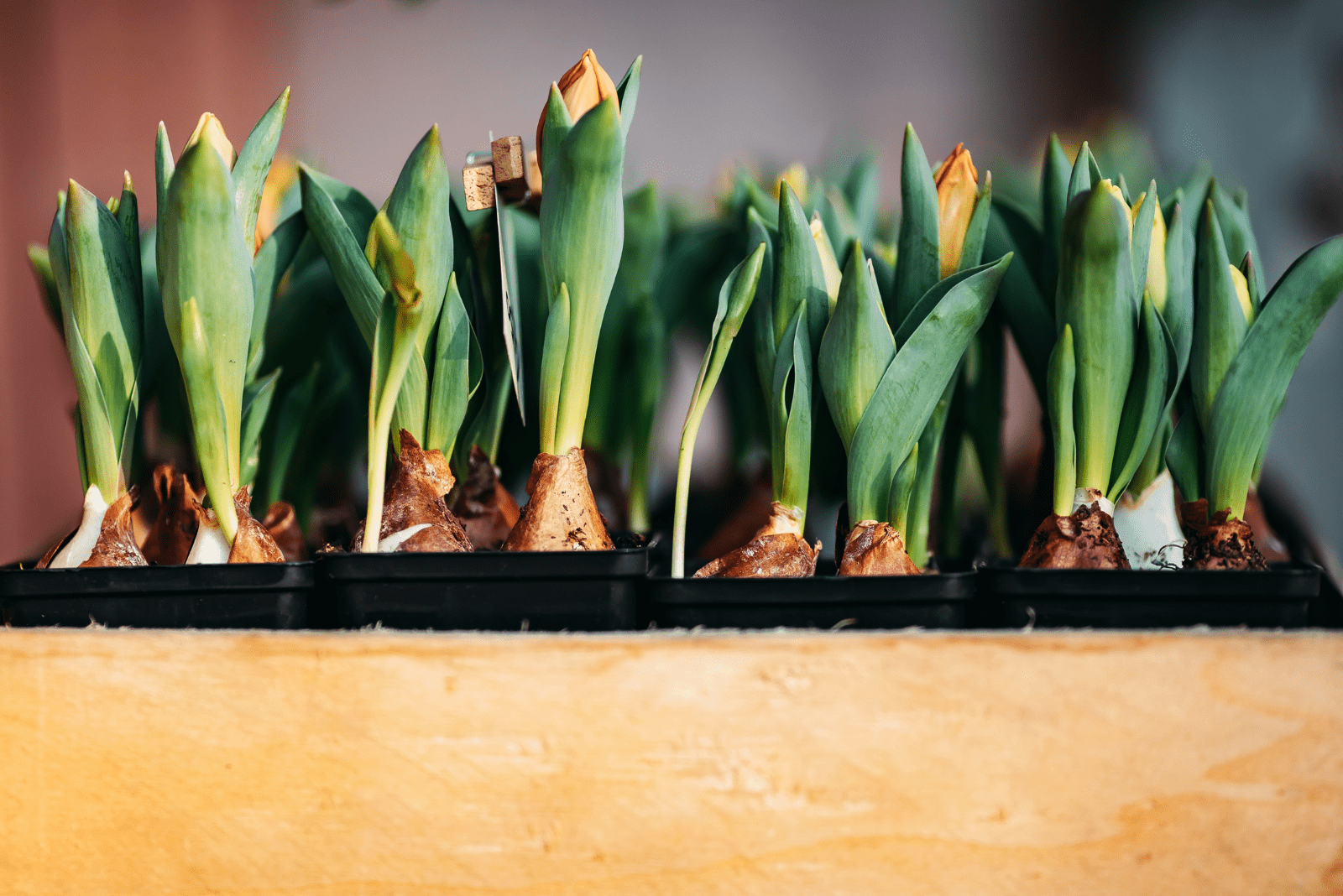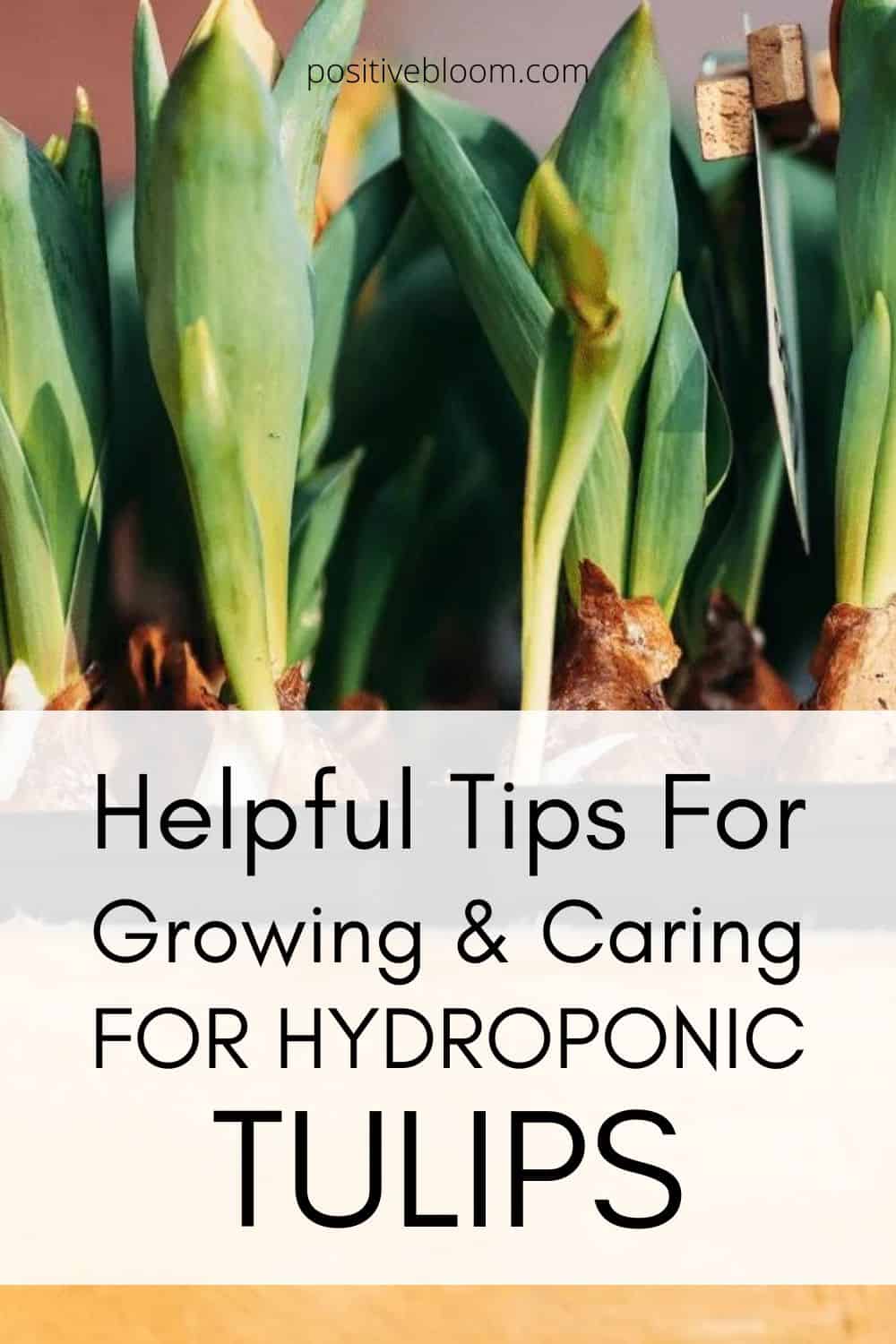Growing flowers in hydroponic systems is not an everyday thing, especially if we’re talking about tulips.
However, it is possible to grow this member of the Liliaceae family solely in water, but you will have to make certain amendments.
Before we get to growing and maintaining tulips hydroponically, let’s learn some basic info about them:
[table id=456 /]
How To Grow Hydroponic Tulips In A Bloomaker Vase
Even though growing tulips outside a regular growing medium might seem a bit strange, it can actually be easier because you won’t have to worry about spacing, drainage, aeration, and other aspects of growing plants in traditional soils.
Hydroponic growing can be a bit harder at first, but only because we’re not used to it.
Below, you can read all about this wonderful flower and admire real tulips in your home, not just awe-inspiring tulip quotes!
Choose The Tulip Bulbs And Vessels Carefully
The main thing you need to do is choose the correct flower bulb. Always go for high-quality, disease-free bulbs to avoid dealing with bacterial infections and mold.
It will save you a lot of trouble later!
Also, choose a proper container so you don’t have to repot your tulip or deal with unsuccessful hydroponic forcing.
Hydroponic trays are perfect for sprouting and growing tulips, but you can also use a Bloomaker vase or any long vessel.
The key is to keep the bulbs (and grown tulips) upright!
Don’t use plastic bulb crates unless you plan to keep them in another, larger vessel that contains water.
Chill The Bulbs
Once you’ve chosen a suitable container, you can prepare the bulbs. Put the tulip bulbs in a paper bag and keep them in dark and cold storage where temperatures are around 45 degrees Fahrenheit (a refrigerator should work).
Once the dormancy period finishes (it usually takes about 12-15 weeks), you can take the tulip bulbs out of the refrigerator, put them in a water tray, and add water that contains dissolved calcium nitrate to encourage healthy growth and development.
Ensure that the bulbs are placed upright and then return them to a dark and cold place for another three weeks (at least). Remember to change the water frequently (every 4-7 days), or your tulip cultivation won’t be much of a success.
Of course, you can always get new bulbs from the market if you don’t want to go through all this trouble.
If you don’t use a hydroponic tray, but instead opt for a Bloomaker vase, you can fill the bottom two inches of the container with pebbles, perlite, small rocks, marbles, or any other inorganic material you can find.
The idea is to keep the tulip’s root system in place and allow it to grow, spread, and perform its absorbing function.
Moving The Bulbs To A Warmer Area
After the tulips have sprouted and the root system has developed, you can move them to a greenhouse or any warm area.
The key is maintaining temperatures between 60-70 degrees Fahrenheit to help the flower buds appear.
Hydroponic Tulips Care
The aftercare of hydroponic tulips is not that challenging, and if it’s your first time, don’t worry; you’ll soon get the hang of it!
All you need to do is ensure the water level is not too low, expose the plant to bright light, and fertilize it.
Of course, as it isn’t grown in traditional soil culture, it might be slightly more demanding, but after caring for it for a couple of weeks, you’ll forget it was ever a burden.
However, they do demand exceptional cleanliness, so you’ll have to clean the water trays or Bloomaker vases regularly to avoid the appearance of harmful microorganisms, such as fungi, mold, or bacteria.
Sunlight Exposure
This flower, that’s famous in Holland, requires plenty of sunlight, but you should avoid exposing it to direct light if possible. Bright indirect sunlight is perfect as it cannot damage the tulip’s delicate leaves, stems, or bulbs.
You should also rotate your tulips about once a week to provide equal sunlight exposure to the whole plant.
Moisture
If you want to increase the lifespan of this Dutch flower, you should consider the type of water you use. Tap water might be filled with chlorine, which disrupts the functioning of the plant’s roots.
However, rainwater is suitable for plants, but if you live in an arid region, you can always get distilled water or let tap water sit in the air for about 24 hours before using it.
Change the water regularly, but try not to submerge the bulbs too deep (try to keep at least 1/3 above the water level).
Temperature
The perfect temperature for hydroponic tulips is between 60 and 65 degrees Fahrenheit, although they can handle slightly warmer temperatures (but don’t go over 70 degrees).
Avoid sudden temperature fluctuations and keep the plants away from drafty spaces.
Fertilizer
There’s no soil from which the roots can draw nutrients, so you’ll need to supplement them with special hydroponic fertilizers.
As plants grown in water don’t have the same needs as those cultivated in a traditional medium, always read the instructions before adding fertilizers.
Repotting And Pruning
The good news is that you don’t need to repot or prune hydroponic tulips. Leave these beauties be and enjoy their magnificent flower heads once the time comes!
Will Hydroponic Tulip Bulbs Rebloom?
Even though we connect them to the Netherlands, tulips are actually breathtaking Chinese flowers that can rebloom even when grown hydroponically.
It doesn’t always happen, but you should still do everything you can to encourage a second wave of flowers.
Cut the withered blooms, but keep the rest of the plant in fresh water and bright sunlight. The plant might enter a new blooming cycle, surprising you with its red, yellow, cream, orange, and purple shades.
Once the tulip has bloomed for a second time, it is highly unlikely to rebloom for the third time.
After the flower heads and stems have withered, the new bulbs will start to grow, and you can separate and use them to propagate more tulips for the next season.
More About Hydroponic Forcing Of Cut Tulips
Hydroponic tulip forcing is a relatively new method of producing this plant, and it has had tremendous success.
Tulips grown this way don’t require the extensive root systems that soil-grown plants do.
Of course, all methods have their benefits and drawbacks, and we’ll discuss the pros and cons of hydroponic tulip forcing below.
[table id=457 /]
FAQ
We’ve discussed many things you need to know about growing tulips hydroponically, but certain questions remain unanswered.
We found the ones you asked us most frequently and will answer them in the paragraphs below!
How long do Bloomaker tulips last?
Bloomaker tulips last for about a week, and if they don’t rebloom, they begin to wither and grow new bulbs.
But don’t let this discourage you; tulips grown in the soil also last that long (or short). However, some tulip cultivars stay in bloom for about two weeks, so you can cultivate them instead.
How many days does it take for a tulip to grow?
It takes about 2-4 weeks for this flower to grow after sprouting. However, you need to leave the bulb in cold and dark storage for about 10-15 weeks before it can sprout and develop into a flowering plant.
Final Thoughts
This article had everything you need to know about hydroponic tulips, including how to grow and care for them, how to encourage reblooming, and the benefits of growing this plant in water.
Essentially, this method requires a bit more effort and investment, but at least you’ll harvest the tulips and bulbs easily and won’t have to clean the soil mess afterward!
Don’t be afraid to add this plant to your hydroponic garden!
Until next time!
Like this post? Share or pin it for later!

